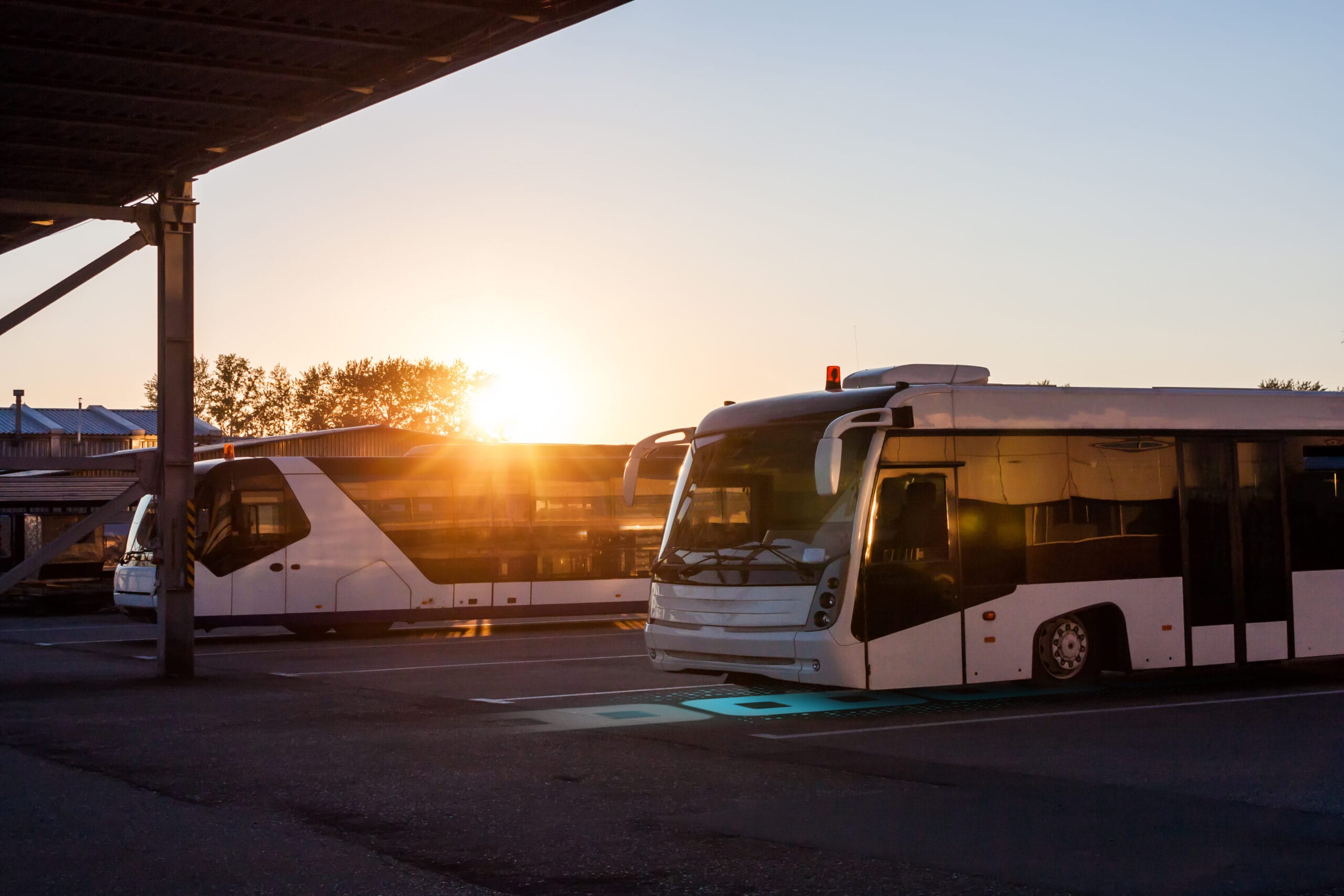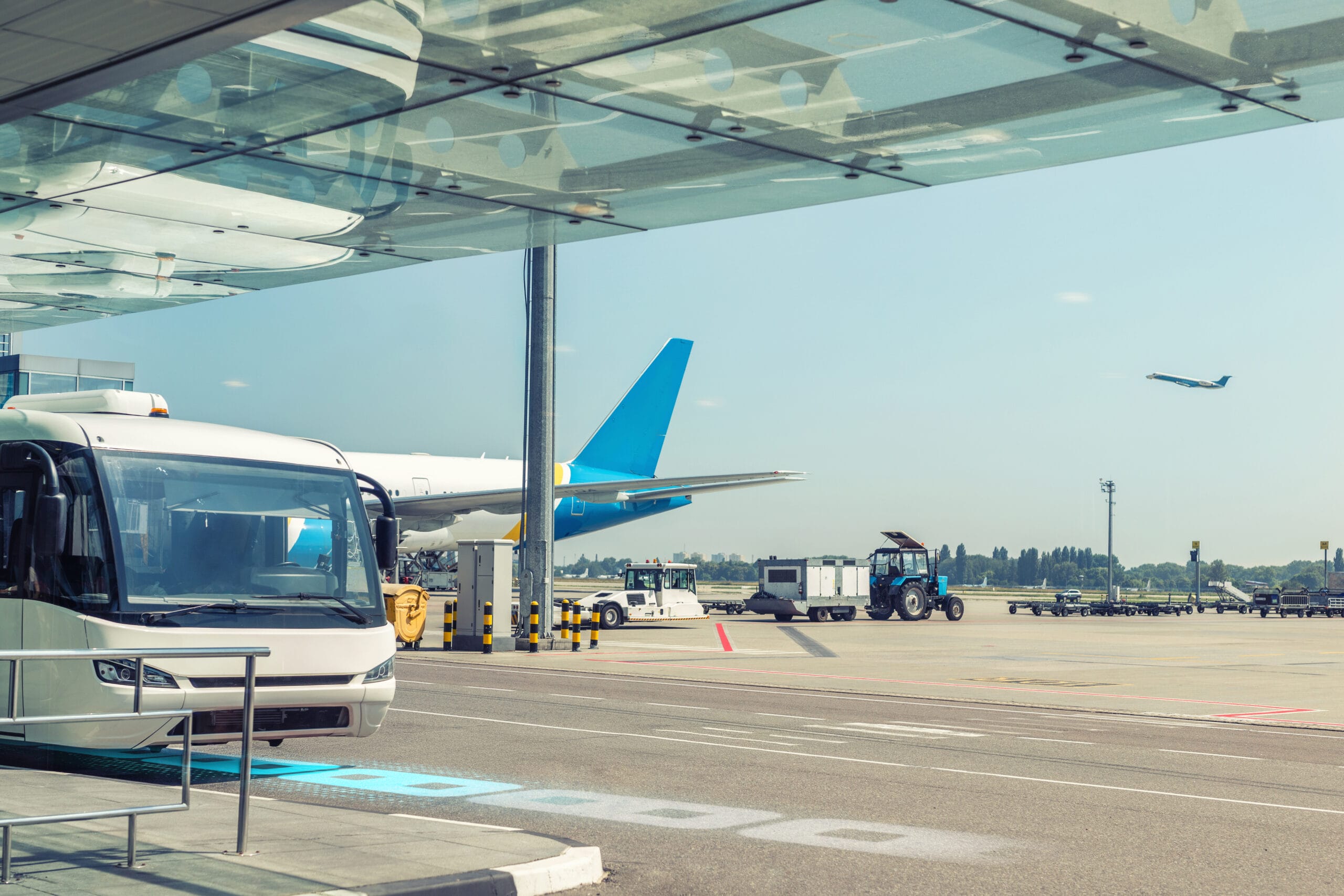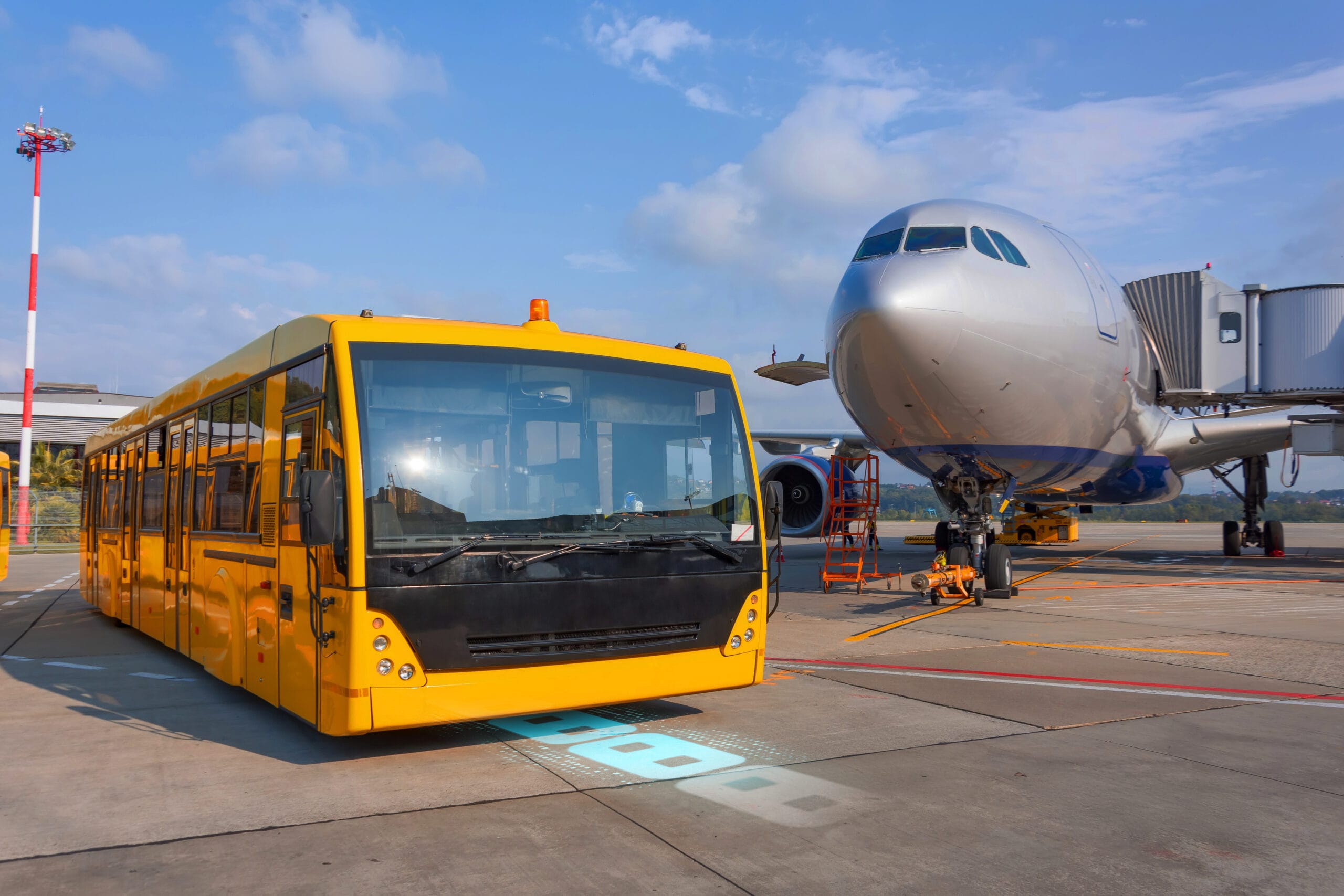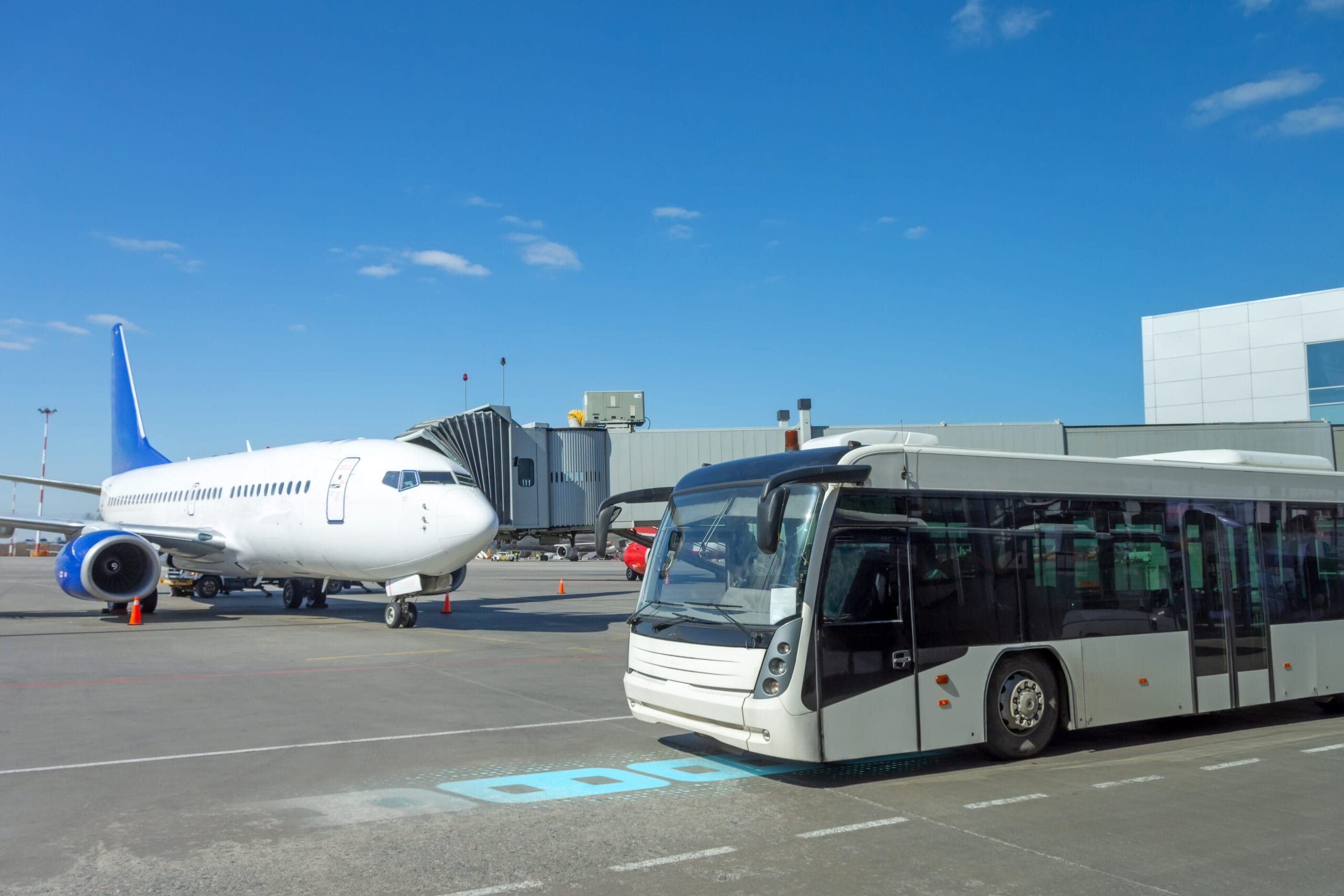In this article
Airports run 24/7—and so should their energy. Electreon’s wireless charging keeps electric fleets moving without plugging in, delivering power right through the pavement. By charging shuttles, taxis, and service vehicles in motion, airports can cut costs, shrink batteries, and eliminate downtime. The system taps directly into renewable energy, balances grid use, and even creates new revenue by offering Charging as a Service (CaaS).
Result: cleaner air, faster passenger flow, and nonstop operations that never miss a beat.
When operations run 24/7, fleets can’t afford to stop
Planes touch down at dawn, baggage carts roll at midnight, and shuttles loop endlessly between terminals. Airport fleets never stop—and neither does the demand for energy.
Now, airports everywhere are turning that nonstop motion electric. Across the world, they’re fast-tracking fleet electrification for a greener runway ahead. According to Forbes, nearly every airport conference now features a session on the topic—a clear sign the pressure is on to cut emissions, fast.
But making it happen isn’t simple. Plug-in chargers keep shuttles parked when they should be moving. Overnight depot charging demands oversized batteries, huge grid connections, and sky-high costs. Those heavy batteries don’t just drive up prices—they also wear down terminal and apron roads. Add in the power needed for heating and air-conditioning, and energy use soars while range drops. Daytime fast charging piles on costly power spikes right when demand peaks, leaving airports with hefty bills, downtime, and strained infrastructure.
And just as fleets electrify, airports face two growing challenges: rising passenger volumes stretching transport capacity, and the need for round-the-clock accessibility so travelers aren’t left waiting.
In a world of short stops and constant motion, charging has to keep pace—quietly, seamlessly, and without slowing anything down.
Because at airports that never sleep, it’s time the power kept moving too.

Power that keeps up with airport life
Picture it—wireless power quietly flowing beneath the pavement, installed at key points along the route. As shuttles pause, load, or pull away, energy transfers automatically—keeping fleets charged without ever plugging in. Power moves with the vehicles, perfectly in sync with the rhythm of airport life.
As airports go greener, many already run on solar power and invest heavily in energy storage to save that sunshine for later. Electreon helps them use it smarter—sending solar energy straight to the fleet instead of storing it in costly batteries. The result? Less investment in storage and more clean energy in motion.
Those steady top-ups keep the grid balanced and make electrification more affordable—spreading demand and easing the steep costs of overnight charging. With energy delivered throughout the day, buses can run on smaller, lighter batteries that go easier on both vehicles and runways. A recent study found that shuttles using wireless charging complete their routes efficiently—cutting costs, weight, and energy use all at once.
And because Electreon’s system powers vehicles continuously—day or night—it helps airports move more passengers smoothly, keeping shuttle service between terminals, parking areas, and gates running nonstop and on time.
Just a few well-placed charging spots can power an entire fleet, keeping operations running smoothly from curb to apron. And it’s future-ready—the perfect match for autonomous vehicles that never need to plug in or power down.
Wireless charging keeps airports efficient, sustainable, and right on schedule.

One charging platform, three modes
Electreon’s wireless charging flips the script. Instead of stopping to charge, power is woven right into the route—quiet, automatic, and part of the daily routine. Coils hidden beneath the pavement deliver energy as vehicles pause, load, or roll away—keeping everything moving without ever plugging in.
And because no two airports operate the same way, Electreon’s platform powers up in three smart modes:
DOT — stationary charging for shuttle buses parked at terminals, gates, parking lots, or near the aircraft—waiting, loading, or unloading passengers.
DASH — semi-dynamic charging for taxis crawling through stop-and-go pickup lines, topping up as they inch forward.
LINE — continuous charging along dedicated lanes, perfect for buses and service vehicles in constant motion.
Together, these modes keep fleets light, batteries lean, and operations right on schedule—whatever the route, weather, or hour.

Beyond the airport fence
Here’s the bonus: wireless charging isn’t just for airport shuttles. The same system can power hotel vans, city buses, taxis—even delivery fleets passing through.
Airports can become clean-energy hubs where every dwell minute turns into charging time. That opens the door to Charging as a Service (CaaS)—a model where outside fleets can conveniently top up while waiting at the terminal, without adding more urban charging infrastructure.
The result? More vehicles charged, fewer emissions, and a new stream of untapped revenue—airports leading the charge in clean mobility.
A nonstop path forward
Airports are the perfect testing ground for wireless charging. They never stop, their fleets never rest, and their passengers expect seamless service. With inductive power underfoot, shuttles keep moving around the clock, costs drop with smaller batteries and smoother grid use, and new revenue flows from visiting fleets that plug in without plugs.
Electreon’s technology not only meets today’s sustainability goals but also helps airports grow smarter—scaling for higher passenger volumes and delivering 24/7 accessibility without added congestion or downtime.
It’s more than just charging — it’s airports evolving into energy-smart ecosystems that move people, power vehicles, and push sustainability forward.
The sky isn’t the limit. With wireless charging, even the ground is full of energy.
See how wireless charging keeps shuttles moving, boosts efficiency, and powers your airport’s next chapter. Contact us today.

FAQs
How does Electreon’s wireless charging work?
Coils embedded beneath the pavement transfer power wirelessly to receivers on electric vehicles as they pause or drive, keeping them charged without plugging in.
Can it work with existing airport fleets?
Yes. Electreon’s system can be added to most existing electric shuttles, taxis, and service vehicles, and new vehicles can be equipped with receivers from the start—making it easy to scale as fleets grow.
Does wireless charging replace traditional plug-in stations?
Not necessarily—it complements them. Electreon enables continuous or opportunity charging, reducing reliance on plug-ins and minimizing downtime.
How does it support airports running on solar energy?
Electreon allows airports to use their solar power directly to charge vehicles, cutting the need for expensive energy storage systems.
Will this help airports handle more passengers?
Absolutely. Continuous charging keeps shuttle service running 24/7, reducing wait times and improving accessibility between terminals, gates, and parking areas.
Is the system ready for autonomous vehicles?
Yes! Wireless charging is the perfect match for self-driving fleets that never need to plug in or stop for power.
What’s the biggest benefit for airports?
Lower operating costs, smaller batteries, reduced emissions—and a brand-new revenue stream by offering Charging as a Service to outside fleets.